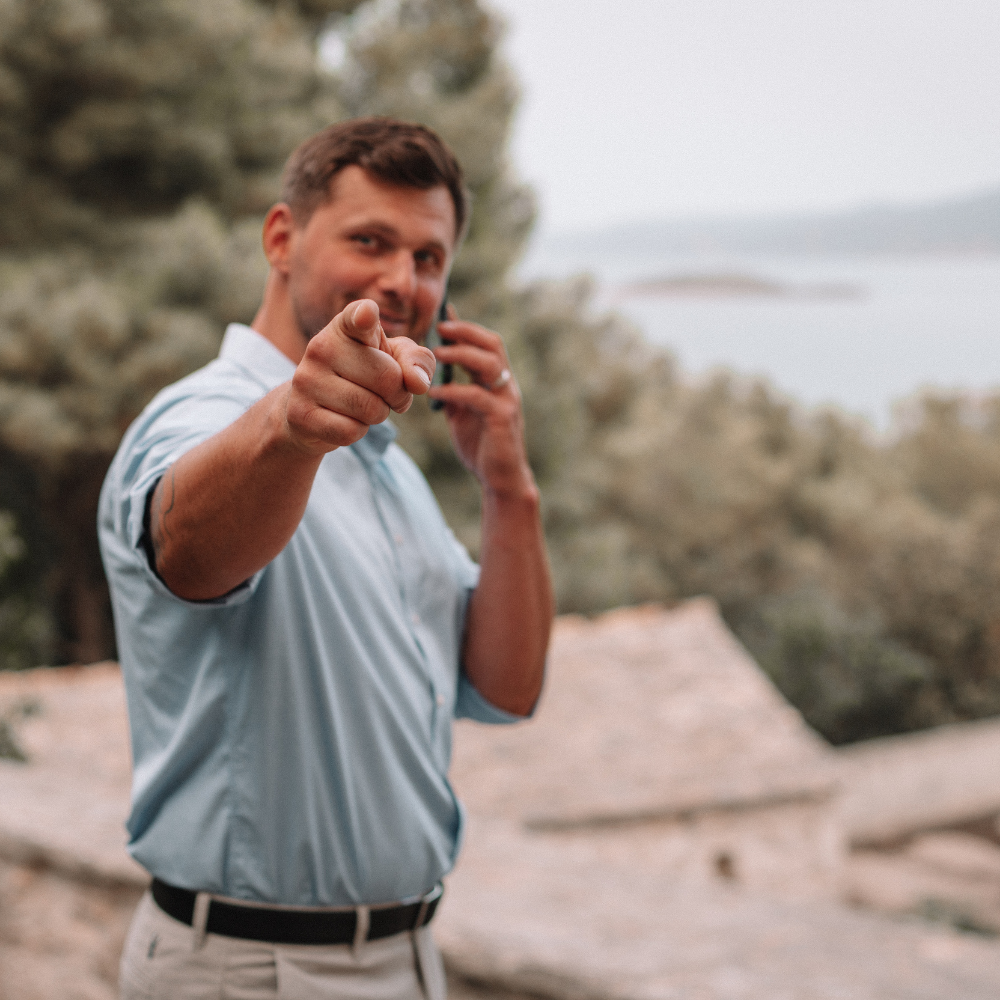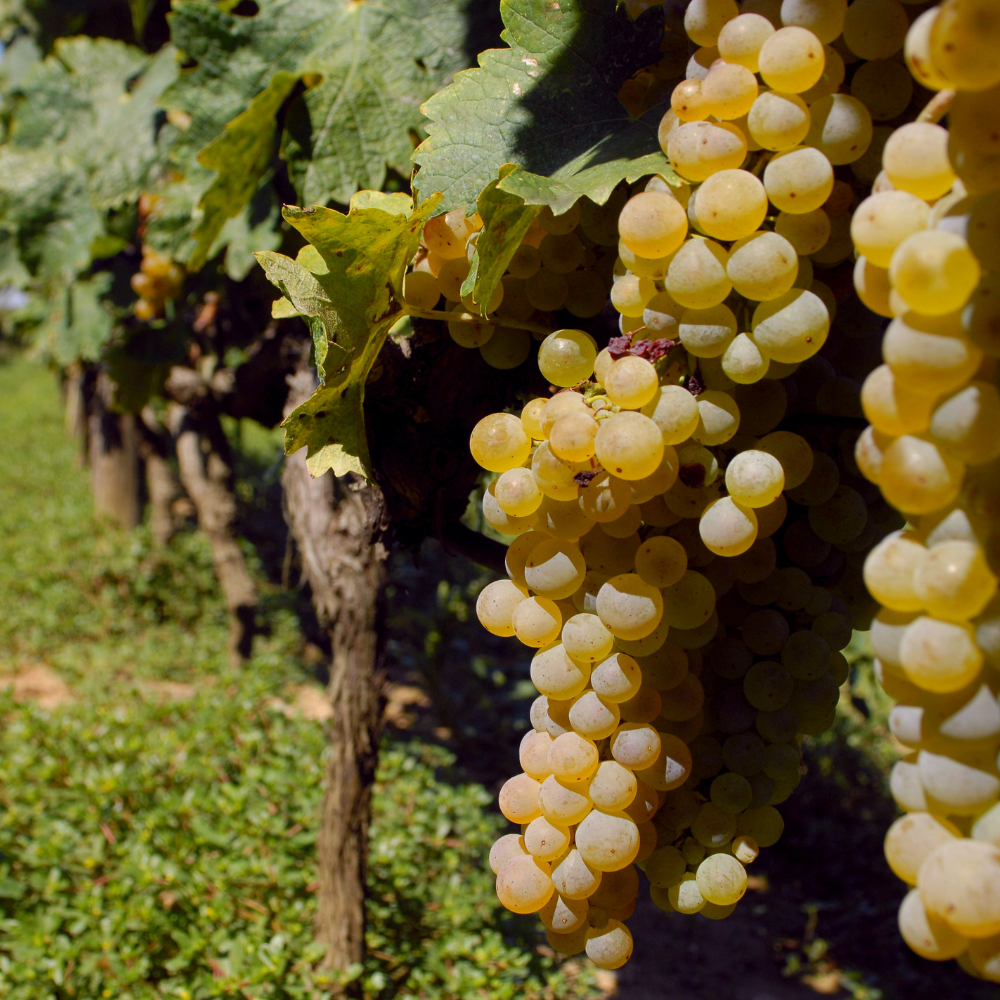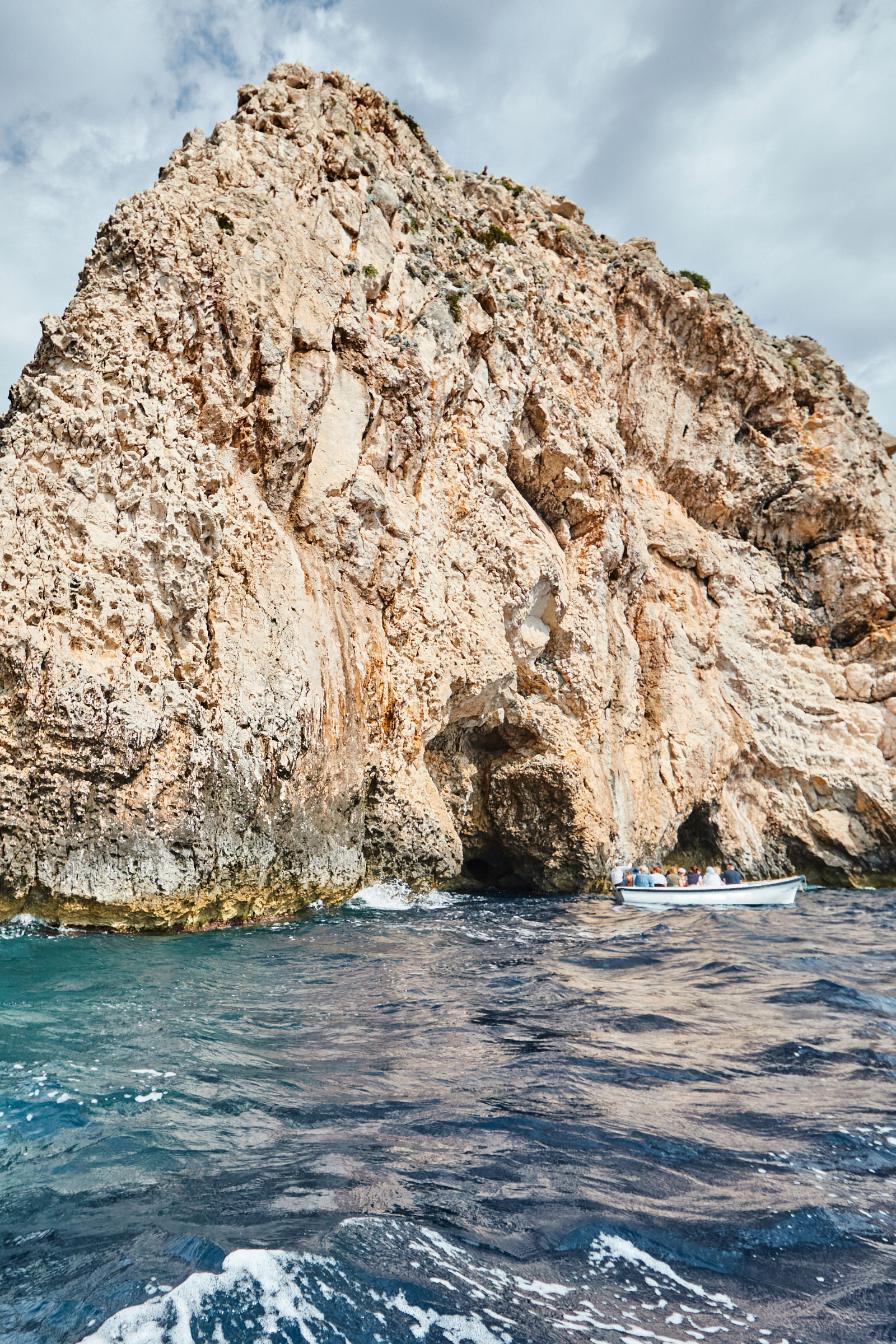A Guide to Ivan Dolac on Hvar, 2024
Ivan Dolac is a peaceful, family-oriented seaside village located on Hvar, a Croatian island in the Adriatic Sea known for its stunning natural beauty, crystal-clear waters, and rich history. In this article, we’ll help you understand why Ivan Dolac is an ideal getaway destination, what to do when you’re here, and essential practical considerations.
An introduction to Ivan Dolac
Ivan Dolac is situated on the southern coast of Hvar and it is one of the island’s most picturesque settlements. The village is located on a slope, which affords breathtaking views of the Adriatic Sea and the surrounding landscapes. It's a great place to watch the sun go down.
The village boasts several beautiful pebble beaches and secluded coves, making it an ideal spot for sunbathing, swimming, and water sports. These beaches are known for their clean and clear waters, which are perfect for snorkeling and diving enthusiasts.
The area around Ivan Dolac is also famous for high-quality wines. Powerful reds thrive on the steep, sandy limestone hills, which provide perfect drainage, and from the intense sun, which shines almost every day in the summer, and reflects off both the rocks and the sea below for triple insolation. The sharp angle and loose soil of the hills on the island’s south side mean that every grape that comes from this terroir is picked by hand. The local grape variety, Plavac Mali, is cultivated here, and you can find various wineries offering tastings and tours. In addition to vineyards, you'll also notice olive groves scattered around the village. Olive oil production is another important aspect of the local economy.
Compared to some of the more bustling towns on the island of Hvar, Ivan Dolac maintains a more tranquil and laid-back atmosphere. It's an excellent choice for travelers seeking a relaxing vacation away from crowds.
While Ivan Dolac itself is charming, it's also well-positioned for exploring other attractions on the island of Hvar. The nearby town of Jelsa and the vibrant Hvar Town are within reach, offering additional cultural, historical, and entertainment opportunities.
How to get to Ivan Dolac on Hvar
Ivan Dolac by Boat
If you are touring Hvar on a powerboat, yacht, sailboat, or catamaran, Ivan Dolac is a brilliant place to stop for lunch or a swim. If you wish to stay overnight, the restaurant Bilo Idro has a small marina in the neighboring village of Sveta Nedilja that provides water, electricity, showers, and toilets. Its inner breakwater is 18m long and 4m deep; the outer is 40m long and 7m deep.
Like other anchorages on Hvar’s southern coast, this marina is vulnerable to winds from the south, especially the infamous jugo. If you decide to tie up here, be sure to call ahead to ensure availability and suitable weather conditions.
Ivan Dolac by Car
If you are bringing a car from the mainland, you will begin your drive to Ivan Dolac at Sućuraj or Stari Grad. The drive from Sućuraj is an adventure unto itself, offering stops at two of the best olive oil tasting rooms in the Adriatic – Radojković and Seca – along a winding road that occasionally narrows down to one lane. From Stari Grad, the drive is also beautiful, albeit less white-knuckle. Both directions will lead you to the mountain town of Pitve and the Old Tunnel of Hvar.
Carved out by convicts and other conscripted labor in 1962, the 1.4km tunnel is single-lane and unlit. This being Dalmatia, there is a wine cellar inside, just to the left of the entrance from the Pitve side – not that we would encourage you to pause and inspect.
Once you emerge from the tunnel, you will be greeted by a glorious view of the sea shimmering below. But don’t get too carried away, and be sure that your brakes are in good order. A steep switchback awaits you as you navigate down to the shore.

What to do in Ivan Dolac
The best thing to do in Ivan Dolac is nothing at all – fjaka as the locals call it, which is something like a siesta, but may also include other forms of pleasurable laziness. Ivan Dolac is right on the beach, and you can explore in either direction to find your perfect spot. Once you’ve recharged your batteries, the region offers a number of day trips and excursions to keep you busy.

Sveta Nedjelja
Sveta Nedelja is just west of Ivan Dolac. It is a small, ancient settlement with a long history of fishing, trading, and winemaking, much like Ivan Dolac. There are three must-visit destinations here:
Red Rocks – a stunning limestone cliff formation, perfect for diving and swimming.
Bilo Idro – mentioned above, Bilo Idro is the tasting room of Zlatan Otok, one of Hvar’s oldest and most esteemed wineries. It boasts a stunning location in a pair of picturesque stone wine “silos” directly on the sea.
Cliffbase – perhaps the only establishment in the world that combines a heart-pumping Via Ferrata with a tasting room located inside a cave. A Via Ferrata is a “path of iron,” a trail forged into Hvar’s cliffs, using a mix of steel ladders and astounding open-work bridges. Not for the faint of heart, but an unforgettable (and safe) way to experience Hvar’s remarkable natural beauty. Drawing on Hvar’s DNA as a wine-producer and a site of richly historic caves, the tasting room is equally historic.

Red Rocks, Sveta Nedjelja
Šćedro
Šćedro is an island nature park just off the coast of Ivan Dolac on Hvar. With two deep, sheltered bays and good agricultural land, Šćedro was a welcome refuge to sailors throughout history. In fact, its name comes from the word štedri in old Slavonic, meaning charitable or gracious. These qualities continue to make the island a popular anchorage with yachts and sailboats, but in earlier eras the island’s role was more strategic. For example, Caesar and Pompey fought one of their greatest naval battles at Šćedro in 47 B.C., winning Caesar’s fleet control of Vis and from thence the Adriatic.
With so much history, Šćedro offers remarkable sites for divers, including a shipwreck from the 2nd century B.C. containing over 80 intact amphorae, a downed WWII fighter plane, and a sunken Roman villa now submerged in shallow water.

On land, Šćedro is no less intriguing. There is an old quarry, 62 large Illyrian burial mounds, and two semi-abandoned villages, Nastale and Mostir. The latter has a lovely konoba run by the Kordić family, and the remains of an imposing Dominican monastery from the 15th century. Even today, mass is held every year on the first Wednesday in July to celebrate Our Lady of Mercy, the “Fešta u Šćedru” or Festival in Šćedro. In the old days, the altar sat directly on the sea so that the preacher could minister to sailors on board their ships. After the ceremony, the few local inhabited houses open their doors to congregants for a feast of home-made wine, klapa, and Dalmatian dishes that lasts long into the night. It’s a truly breathtaking window into the deep traditions that underpin life here on the island.
For all of its mystery and beauty, Šćedro is easy to get to from Ivan Dolac. Just go to the next town over, Zavala, and grab one of the ferries that run twice a day to and from the island.
Humac
Ivan Dolac is relatively close to Humac, a tiny village packed with remarkable experiences:
Take a walk with an experienced local guide, who will lead you down an old stone cart path, past overgrown vineyards, pointing out native plants and their uses in folk medicine all along the way. Down a steep path over the sea and through a low entrance protected by an iron gate, you will enter a round, spacious cavern: Grapčeva Cave, where the oldest known depiction of a boat in Europe was discovered. This cave is one of the archaeological sites establishing what is known as “Hvar Culture.” Far from cave dwellers, the people of Hvar Culture were an ancient nautical civilization who used this cave as a site for funeral rituals, leaving evidence of their presence with sophisticated - and quite attractive - ceramics.
After delving into the deep past, explore more recent centuries in the ethnovillage of Humac, a well-preserved example of the seasonal settlements that flourished in the arduous but lucrative years of the 19th century, when Hvar produced a significant portion of Europe’s wine and aromatic oils. Humac was founded in the 1600s, but it was greatly expanded in these “boom years” when Continental wealth fed a demand for the island’s agricultural products.
Come back for dinner at Konoba Humac, which has the distinction of being a restaurant without running water or grid electricity. There is a generator which powers a few electric bulbs in the kitchen, but to say the experience is “traditional Dalmatian” is an understatement. As the sun sets against the sea and the mountains of the mainland, the only illumination comes from candles and the stars above, creating an unforgettable atmosphere.

The ancient dry stone walls of Konoba Humac
Jelsa
Bars, art galleries, an open-air cinema, fine dining, farmer’s markets, a vast kid’s park, jogging paths, and a zillion gelato bars line Jelsa’s beautifully maintained riva, offering a buzzy change of pace to the tranquility of Ivan Dolac. Stop by for a night out or a resupply. Parking is blissfully cheap and easy, and a gas station waits just outside of town along with two large, brand new grocery stores.
Nearby Beaches
When you’re ready to hit the beach again, rent a boat and start exploring. There are idyllic coves to the left and right of Ivan Dolac, including Jagodna, Petarčica, and Bojanic Bad, as well as dozens of others towards Hvar Town on the west and Sučuraj on the east.

Where to stay in Ivan Dolac
Ivan Dolac has no hotels, so your choice is between camping, staying in your boat if you have one, or renting an apartment or villa. As a coastal village, it is important to look for a location that has true proximity to the sea. A 15-minute walk up a steep hill to retrieve forgotten items or a favourite snack will quickly wear thin. Likewise, since Ivan Dolac is somewhat remote, you will likely be cooking some meals at home and spending a fair amount of time in your rental. Consider the kind of amenities, aesthetics, and spaciousness that will make you and your loved ones feel relaxed during an evening at home.
Hvar Away has two properties in Ivan Dolac, carefully selected on the basis of these characteristics. Both properties are directly on the water – no lugging cushions and umbrellas and cumbersome bags to the beach.
Luma Hvar (from €293 per night) is all about bright, beachy comfort with an excellent terrace featuring mature trees that provide generous shade from the summer heat.

Luma Hvar: walk out to the sea from a tasteful, well-equipped oasis of tranquility.
Luce di Mare (from €530 per night) exudes serious luxury with a private sauna, massage table, tasting room, gym, and sprawling suites with sea views. Its terrace has two pools, a large poolside kitchen and dining area, as well as an outdoor shower.

Luce di Mare: one of the most luxurious properties on the southern coast of Hvar.
Where to eat in Ivan Dolac
Dinner: Restaurant Rot, despite its off-putting name, is a lovely choice. Run by members of the Carić family, Rot offers lovingly prepared Dalmatian classics like slow-baked peka, freshly caught fish, and homegrown vegetables.
Lunch: Closer to the water, Slavinka has a lighter menu, emphasizing small plates, salads, and pastas. Take your pick between grilled squid, Istrian pasta in truffle sauce, or a Zagreb-style stuffed steak, for example.
Coffee: Vartal Bar and Mareto both offer a pleasant atmosphere and plenty of shade for a morning cappuccino or an afternoon pick-me-up. Don’t be afraid to linger. Dalmatians have been known to savour a single cup for hours at a time while catching up with friends.
Drinks: On the eastern edge of Ivan Dolac, Šanpjerin Beach Bar serves up local wines and refreshing cocktails in a gorgeously relaxed atmosphere.

Photo credit: Šanpjerin Beach Bar
The history of Ivan Dolac
Like other places on Hvar’s southern coast, human activity in Ivan Dolac likely stretches back millennia, but the village first enters the historical record in the 15th century as “Taja,” meaning “to roll or flatten” in dialect, a name which likely refers to the steep hills which frame the settlement.
Taja is the oldest of the hamlets which now comprise Ivan Dolac. By the 15th century, it already housed a monastery and was a seasonal settlement for residents of the inland village of Svirće, itself a “daughter” village of Vrbanj. In the upper part of Ivan Dolac, one can visit an early Gothic church dedicated to Mary, which was enlarged in 1535 and where the feast of the Queen of the Rosary has been celebrated on October 7th for over 500 years.
It’s worth taking a moment to appreciate, as you pass from the northern and more populated side of Hvar to the southern coast, what this journey must have been like, on foot or with donkeys, before car access, which only became possible in the 1970s.

The terrain from Svirće to Ivan Dolac. Quite a hike! Photo credit: Croatian Mountaineering Association
In 1606, the Venetian Republic gifted the pirate prince Tadija Kačić land here and in nearby Zavala. Kačić was a member of one of Croatia’s 12 great families. For several centuries, the clan ruled the kingdom of Omiš, which stretched as far south as the River Neretva in contemporary Bosnia and, for a time, extended to the islands of Brač, Hvar, Vis, and Korčula. Situated between the Republics of Ragusa (modern Dubrovnik) and Venice, Omiš thrived for centuries on piracy - the reign of the hajduk, a powerful identity in southern Dalmatia even today. First preying on merchant ships and crusaders, then later on marauding Turks, the local author Milko Peko recalls the Kačić family’s fierce motto thus:
Neka huka bure i garbina,
zaludu dušman krivom sabljom maše
dok je krvi loze Kačićeve,
slobodne će biti vale naše!
May the winds of Bura and Garbin roar.
In vain, the enemy waves his guilty saber.
While Kačić blood still climbs,
Our bays will be free!.

Tadija came from the Makarska branch of the Kačić. He and his family fought alongside the Venetians against the Turks, who continually threatened all of Dalmatia throughout the Renaissance. The land which Venice gave to Kačić was intended for resettlement of people fleeing Turkish violence on the mainland. However, existing residents of Ivan Dolac resisted the inflow of migrants, and instead the refugees found new homes in Zavala. The ruins of Kačić’s tower in western Zavala remain today as a testament to this turbulent period in Croatia’s history.
In more recent times, the local family Carić played a leading role in the village, probably providing it with its current name, which literally means Ivan’s Valley - “dolac” is a type of dale formed by karst rocks, and Ivan is a shortened form of Ivanov, meaning “of Ivan.” The Carić family is in fact the only clan in Ivan Dolac today with continuous lineage dating back centuries. The Carić still make outstanding wine today; their whites are particularly appealing. They have vineyards near Ivan Dolac and their tasting room is in Jelsa.
However, times were not always so good as they are now, and there is an inscription by the Church of St. Mary in Ivan Dolac that evokes the community’s suffering and fear in the face of the grape plague phyloxera, which inflicted terrible hardship all across the winemaking regions of Europe around the turn of the century, somewhat akin to the better known potato famine in Ireland:
In honour of Our Lady,
Ivan Carić, father of Juraj, built this church.
Powdery and downy mildew
Have destroyed grapes since 1852,
A heavy blow.
Phylloxera came to the vineyards of Zadar.
With horror, the destruction of the nation is awaited.
Friend! Hardened people anger God
Turn yourself to the blessed Mary
That the Almighty may save you
From these three scourges.
Year of Our Lord, 1901
In spite of these efforts, the permanent population of Ivan Dolac had plummeted nearly to zero by the 1920s, not to recover until nearly 80 years later, when tourism revived the fortunes of this small coastal hamlet.
Trending Articles
Recommended Croatia Travel Articles
Discover MoreJoin The Hvar Away Community
Make sure you are the first to hear about our newest villas on Hvar, keep up to date with the latest island happenings, and win in our exclusive competitions.










